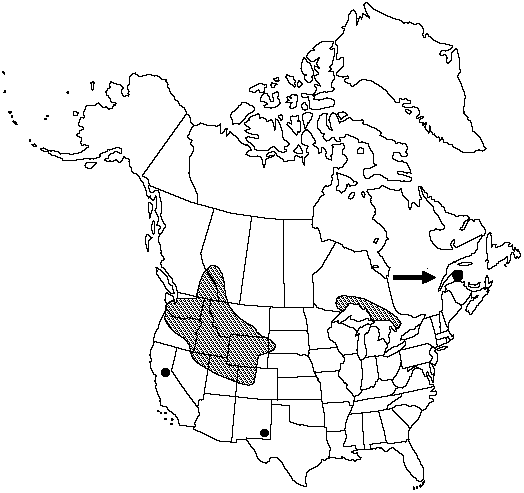Woodsia scopulina subsp. laurentiana
Contr. Univ. Michigan Herb. 19: 59. 1993.
Scales of stems and petiole bases (at least some) with clusters of dark, occluded cells near center forming narrow, usually discontinuous stripe, scales ovate-lanceolate. Pinnae with longest hairs composed of 2–5 cells. Indusial segments narrow, often filamentous distally. Spores averaging 50–57 µm. 2n = 152.
Phenology: Sporulating summer–fall.
Habitat: Cliffs and rocky slopes, found on a variety of substrates including both granite and limestone
Elevation: 0–3000 m
Distribution

Alta., B.C., Ont., Que., Ariz., Calif., Colo., Idaho, Mont., Nev., Oreg., S.Dak., Utah, Wash., Wyo.
Discussion
In addition to hybridizing with Woodsia scopulina subsp. scopulina (see comments above), subsp. laurentiana may have crossed with Woodsia oregana subsp. cathcartiana to form W. × maxonii R. M. Tryon. With very few collections and no biosystematic data available, however, the origin of this putative hybrid remains in doubt. Contrary to previous hypotheses (D. F. M. Brown 1964; D. B. Lellinger 1985), Great Lakes populations of W. scopulina were not involved in the origin of the local hybrid known as W. × abbeae (F. S. Wagner 1987).
Selected References
None.